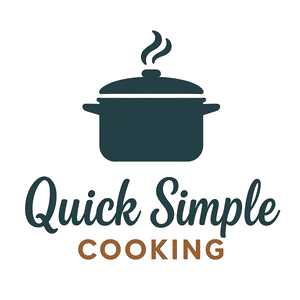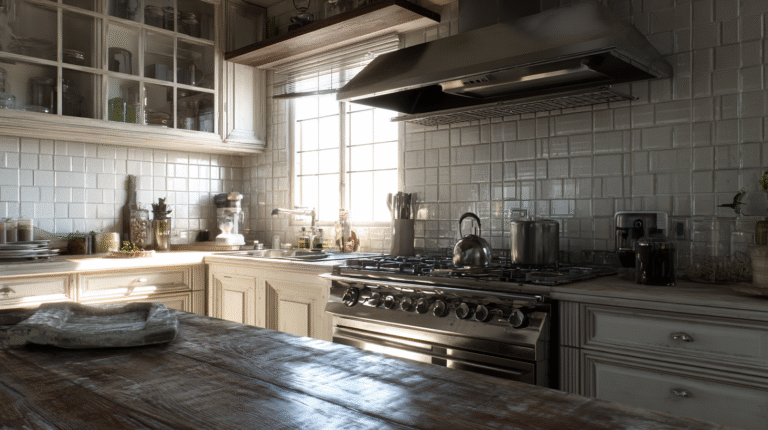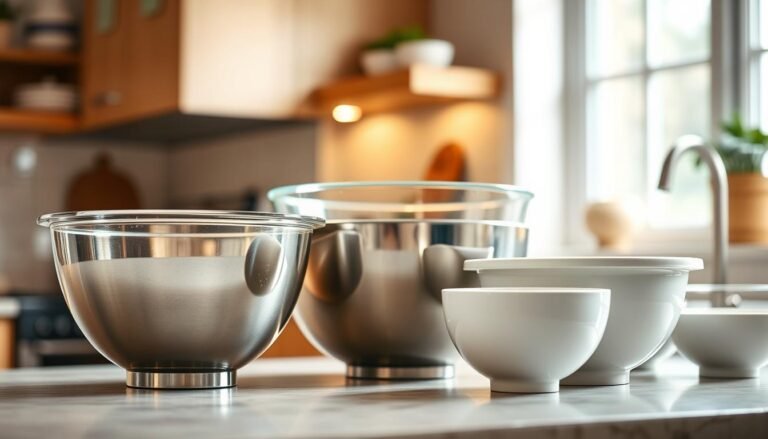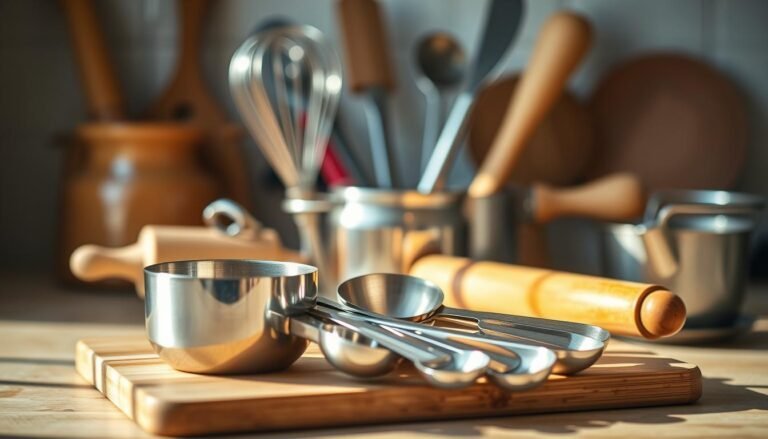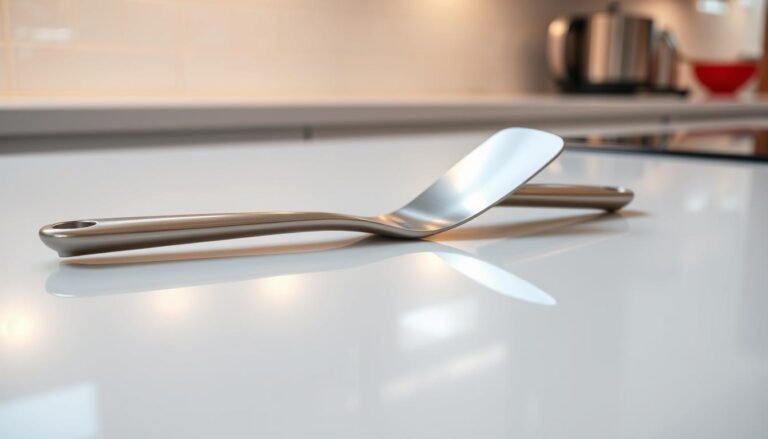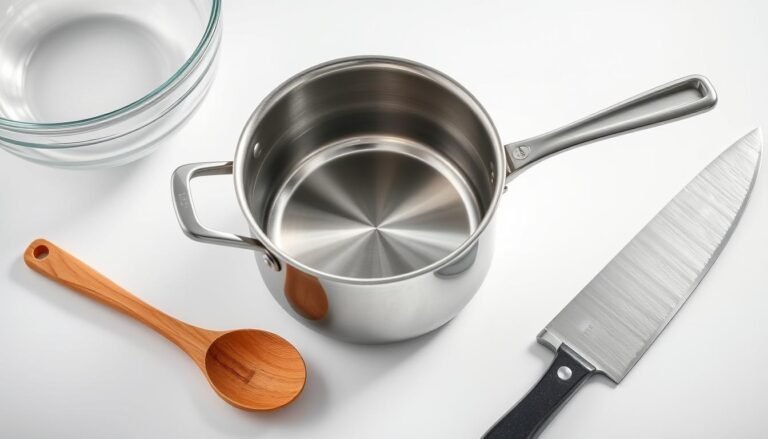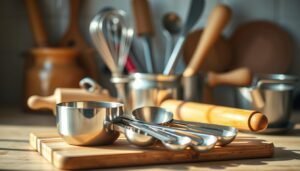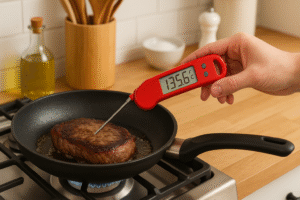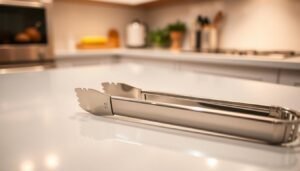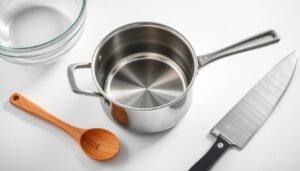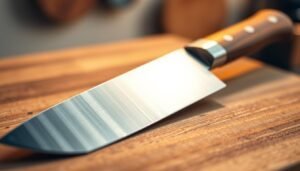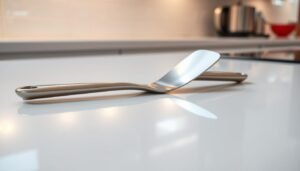Disclosure: This Post Contains Affiliate Links; We earn a commission on purchases.
A whisk is a key kitchen gadget. It blends ingredients and adds air to mixtures. This makes it a must-have for both pro chefs and home bakers.
The modern whisk has a long handle and wire loops. It mixes ingredients well and adds air.
Whisks are great for many kitchen tasks. They help with sauces and cakes. They are essential for mixing and adding air.
Key Takeaways
- A whisk is essential for mixing and blending ingredients.
- It incorporates air into mixtures, making batters smooth.
- The modern whisk is designed for efficient mixing.
- Whisks are used for aeration and emulsification.
- They are a critical tool for both chefs and bakers.
Understanding the Culinary Importance of Whisks
A whisk is more than a simple kitchen tool. It’s key for chefs and home cooks. It has a long handle and wire loops to mix and whip ingredients.
The Anatomy of a Whisk
The whisk’s design is key to its use. Its wire loops are made from durable materials like stainless steel or silicone. The handle, made from wood, plastic, or metal, helps with grip and comfort.
How Whisks Work: The Science Behind Aeration
Whisks add air to mixtures, making foods like meringues light and fluffy. The wire loops cut through ingredients, adding air and increasing volume. This is called aeration, and it’s vital for texture, flavor, and look.
Whisks vs. Other Mixing Tools
Whisks are special because they offer precision and control. They’re better than electric mixers for delicate sauces and dressings. Whisks are also easy to use and clean, making them a must-have in kitchens.
The Whisk Family: Types and Their Specialized Uses
Whisks come in many types, each for a different task in the kitchen. They are not just simple tools. They are essential baking tools made for specific jobs.
Balloon Whisks: The All-Purpose Option
The balloon whisk is a common kitchen tool. It has a bulbous shape and many wires. It’s great for whipping cream, beating eggs, and mixing sauces.
The wires are made from strong materials. This makes them easy to clean and last long.
French Whisks: For Sauces and Precise Mixing
French whisks are slim and good for mixing sauces and dressings. They are perfect for deep pans. Their design lets you mix with great control.
Flat or Roux Whisks: Perfect for Deglazing and Sauces
Flat whisks are great for making roux and scraping pans. They are made from strong wire whisk materials. This makes them perfect for deglazing hot pans.
Ball Whisks: The Modern Alternative
Ball whisks are a newer design. They have a silicone or metal ball at the end. They are good for mixing in deep or narrow places.
They mix ingredients well without leaving lumps.
Silicone and Coated Whisks: For Non-Stick Cookware
Silicone or coated whisks are best for non-stick pans. They don’t scratch and are gentle. Yet, they mix well.
In short, there’s a whisk for every need. Whether it’s for a sauce, omelette, or batter. Knowing about different whisks can make cooking and baking better.
Mastering Essential Whisking Techniques
Whisking is an art that mixes air and liquids together. It makes mixtures stable. Whisking adds air and mixes liquids like oil and water.
Emulsifying: Creating Stable Mixtures
Emulsification mixes liquids that don’t usually go together, like oil and vinegar. A silicone whisk is great for this. It scrapes the bowl well, making sauces smooth.
Aerating: Incorporating Air for Volume
Aeration adds air to ingredients, making them lighter. Whipping cream or eggs adds air bubbles. This makes them fluffier. An egg beater or wire whisk helps get the right mix.
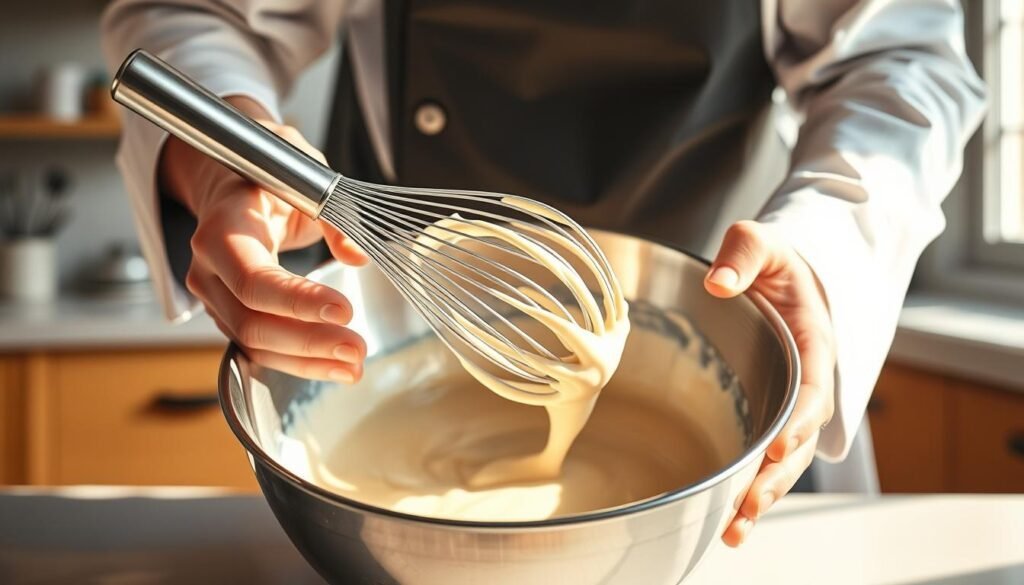
Creating Smooth Batters: Tips and Tricks
Smooth batters are key for good baked goods. Whisk dry ingredients well before mixing with wet ones. A balloon whisk or flat whisk helps mix evenly and adds air.
Whipping: Transforming Liquids to Peaks
Whipping turns liquids into stiff peaks. It’s used for cream, eggs, and sauces. Start slow and speed up as it thickens. Use a sturdy whisk with the right wires.
Choosing the Right Whisk for Specific Culinary Tasks
Different tasks need different whisks for the best results. Whether baking, making sauces, or mixing cocktails, the right whisk matters a lot.
Baking Applications: Batters, Doughs, and Creams
A balloon whisk is best for baking. Its shape and wire design are great for mixing batters and creaming ingredients. For thicker doughs, a flat whisk works better, giving more leverage and mixing power.
Sauce Making: From Roux to Hollandaise
Sauce making needs precision and the right tool. A French whisk is perfect for sauces like roux or Hollandaise. Its slender shape allows for smooth stirring, avoiding lumps.

Cocktail Preparation and Specialty Uses
In making cocktails, a ball whisk or a silicone-coated whisk is useful. These whisks are good for mixing in deep containers and handle vigorous shaking well.
Professional vs. Home Cook Considerations
Professionals need durable and versatile whisks. Home cooks might focus on ease of use and cleaning. But, knowing the task and choosing the right whisk can improve cooking results.
Whisk Care and Maintenance for Longevity
Keeping your whisk in top shape is key. It’s a vital baking tool. Start by cleaning it well after each use. Then, store it right to avoid damage.
Cleaning Different Types of Whisks
Each whisk needs a special cleaning method. Stainless steel whisks can be cleaned with soap and water. But, use a soft sponge and mild detergent for silicone-coated whisks. This keeps the coating safe.
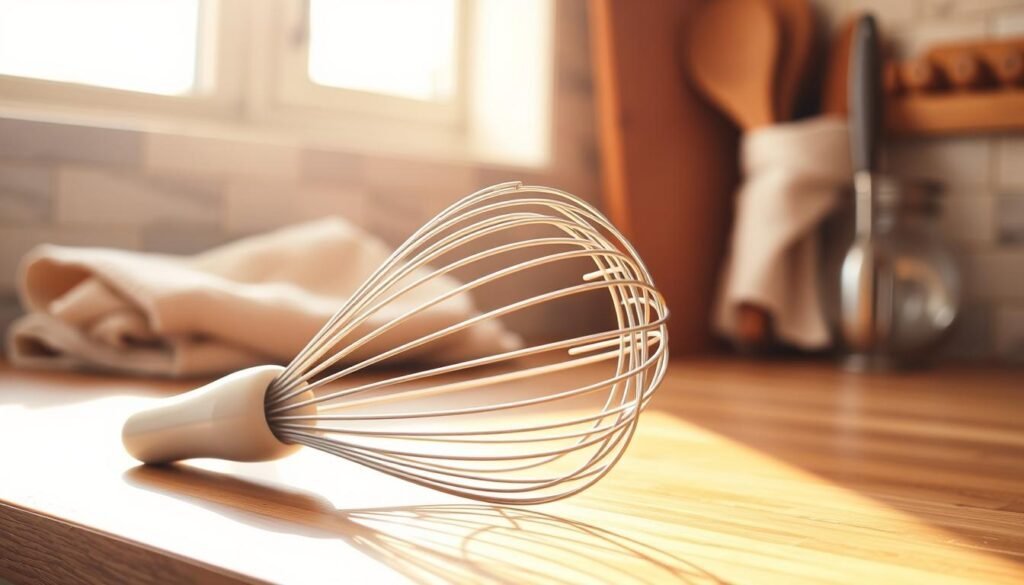
Proper Storage Methods
Don’t store your whisk where it’s wet. This can cause rust or bacteria. Instead, hang it in a dry spot. A hook or hanging rack is perfect.
When to Replace Your Whisk
If your whisk looks worn out, it’s time for a new one. Look for frayed wires or a loose handle. Regular checks keep your cooking utensil working great.
Elevating Your Cooking with the Perfect Whisk
Understanding whisks’ role in cooking can take your dishes to the next level. A whisk is not just a tool; it’s key for mixing, blending, and making smooth batters.
There are many types of whisks, each for different tasks. Choosing the right one can change how your food turns out. From balloon whisks to silicone-coated ones, the right tool makes a big difference.
Learning to use a whisk well can improve your cooking skills. It doesn’t matter if you’re making a sauce or a meringue. The right whisk is essential for success.
FAQ
What is the primary function of a whisk in cooking and baking?
A whisk mixes, emulsifies, and aerates ingredients. It makes batters, sauces, and dressings smooth. Whisks blend ingredients well, adding air, and are key in the kitchen.
What are the different types of whisks available, and what are their specialized uses?
There are many whisks, like balloon, French, flat, ball, and silicone ones. Each is for different tasks, like mixing, sauce making, or using with non-stick pans.
How do I choose the right whisk for my cooking needs?
Choose a whisk based on the task, like baking or making sauces. Think about the ingredients and what you want to achieve. For example, a balloon whisk is versatile, while a French whisk is best for sauces.
What are some essential whisking techniques to master?
Key whisking skills include emulsifying, aerating, and whipping. Learning these will help you get the right textures in your dishes.
How do I care for and maintain my whisks?
Clean your whisks well after each use and store them right. Different whisks need different cleaning methods. Proper storage prevents damage and tangling.
Can I use a whisk for tasks other than cooking and baking?
Yes, whisks are great for making cocktails and mixing special ingredients. They’re useful in many kitchen tasks, not just cooking and baking.
What are the benefits of using a silicone or coated whisk?
Silicone or coated whisks are perfect for non-stick pans. They won’t scratch and are easy to clean. They also handle high heat well, making them versatile for cooking.

With over a decade of experience turning everyday ingredients into reliable, crowd-pleasing meals, Ryan knows firsthand the frustration of wasting time and effort in the kitchen. He specializes in clear, no-fuss guidance—breaking down techniques, time-saving tips, and smart shortcuts so that even complete beginners feel empowered and confident.
Subscribe to Our Newsletter
